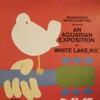'Edvard Munch and the Cycle of Life' Includes His Powerfully Emotional Alpha and Omega Series
- January 14, 2020 18:57


The Chrysler Museum of Art will present its first-ever exhibition of Edvard Munch’s iconic works in Edvard Munch and the Cycle of Life: Prints from the National Gallery of Art. On view February 28–May 17, 2020, the show will consist of 50 prints, including The Scream and Madonna. It will include images Munch developed for his 1902 exhibition Frieze of Life, as well as the entire 1908–1909 series Alpha and Omega, his invented story of the first humans. The exhibition will also offer Munch’s satirical look at his own life and failures at love.

“The work of the Norwegian artist has come to symbolize the crisis of modern life. The Chrysler’s exhibition is an original concept that focuses on Munch’s career-long obsession with the theme of the cycle of life, from the seeds of love and the passing of love to anxiety and death,” said Lloyd DeWitt, Ph.D., the Chrysler’s chief curator and Irene Leache Curator of European art.
Munch’s early years were marred by illness, tragedy and death as his mother and sister both succumbed to tuberculosis. He suffered from anxiety and depression as well as chronic bronchitis yet developed a successful avant-garde artistic career in Kristiania (present-day Oslo), Norway. While the many lonesome figures in his work suggest he was a solitary figure, he was highly involved in the bohemian and artistic life of Kristiania, as well as Paris and Berlin, as the first section of the Chrysler’s exhibition explores. He illustrated programs for the renowned Norwegian playwright Henrik Ibsen and made a portrait of the leading French poet Stephan Mallarmé.

The second section looks at the cycle of life and includes prints connected to Munch’s 1902 exhibition, Frieze of Life. The project grew out of images from the mid-1890s on the theme of love, like Madonna and Attraction. Munch expanded these into the Frieze first exhibited in Berlin in 1902. Included were images on death, such as In the Land of Crystals of 1897, and anxiety displayed in The Scream of 1895. The lithograph version in the exhibition is one of only 25 impressions of the print that exist today. The iconic image documents a dusk stroll in Kristiania during which the sky turned bright red and Munch experienced the “scream heard through all nature.” The unusual face of the screaming figure may have been based on an ancient Peruvian mummy he saw at the Universal Exposition of 1889 in Paris. The focus on the cycle of life allowed Munch to process the many traumas and psychological challenges he faced, principally anxiety and addiction, which led to his 1908 hospitalization in Copenhagen. His psychiatrist used modern treatments, including a version of electroshock therapy. During his eight months of treatment, he produced Alpha and Omega.
Often revisiting themes in the Frieze of Life that focused on love, separation and death, Alpha and Omega chronicles the story of “the first humans” who live and die on an island. The characters are inspired by Munch and Tulla Larsen, a much younger woman with whom he had a disastrous affair that terminated in Munch’s suicide threat and gunshot wound that disfigured one of his fingers. Munch frequented the Copenhagen Zoo while under treatment and satirized Larsen’s friends as different zoo animals that ultimately attack and kill Alpha, ending the story and closing the cycle of life. The works in this exhibition show a remarkable side of Munch, who unflinchingly confronts his failures and inner demons through his powerful imagery.
“These are fragile prints that can only be exhibited every few years in order to protect them against light exposure so that future generations can enjoy them,” said DeWitt. “The National Gallery of Art and the Epstein family have been exceptionally generous in lending an astounding 50 sheets so that our audience can experience the full range of work of one of the most well-known and powerful artists ofthe 19th and 20th centuries.”

















100x100_c.jpg)


